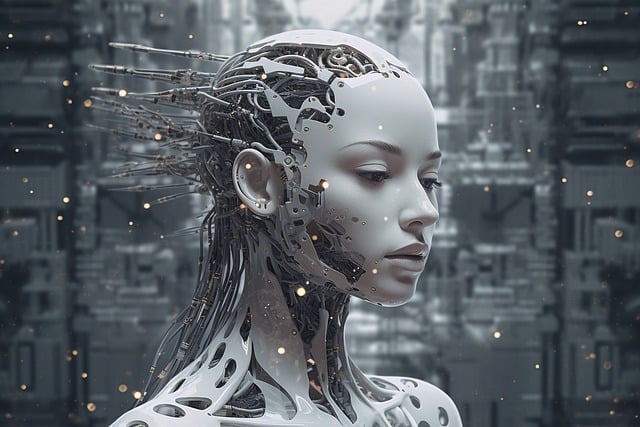
Deep learning has revolutionized the field of artificial intelligence (AI) by enabling machines to perform complex tasks such as image recognition, natural language processing, and even autonomous driving. This subset of machine learning mimics the workings of the human brain, using artificial neural networks to “learn” from vast amounts of data. In this article, we will delve into the fundamentals of deep learning, its applications, and the impact it has made on various industries.
What is Deep Learning?
At its core, deep learning is a form of machine learning that involves training algorithms called neural networks. These networks consist of multiple layers of nodes (artificial neurons), where each layer extracts increasingly complex features from the data. This hierarchical structure allows deep learning models to automatically learn representations from raw data, without the need for manual feature extraction.
How Does Deep Learning Work?
Deep learning operates on large datasets, with each neural network layer learning different patterns. The process is based on the following steps:
- Input Layer: The data is fed into the network as raw inputs, such as images, text, or audio.
- Hidden Layers: These layers process the input data by performing mathematical operations. Each hidden layer extracts features, with deeper layers capturing more abstract representations.
- Output Layer: The final layer produces the output, which could be a classification (e.g., “cat” or “dog” in an image) or a prediction (e.g., stock price forecasts).
The training process involves adjusting the weights of connections between neurons through a method called backpropagation, which minimizes the error between predicted and actual outputs. Deep learning models often require vast computational power and data to achieve high performance.
Key Applications of Deep Learning
Deep learning has found success in a wide range of applications, including:
- Image Recognition: Convolutional neural networks (CNNs) are commonly used for tasks like object detection and facial recognition. For example, Facebook’s facial recognition feature is powered by deep learning.
- Natural Language Processing (NLP): Recurrent neural networks (RNNs) and transformers have enabled advancements in language models like GPT-3, which is capable of generating human-like text.
- Autonomous Vehicles: Companies like Tesla and Waymo rely on deep learning to process sensor data and make decisions in real-time, facilitating self-driving capabilities.
- Healthcare: Deep learning models are used for medical image analysis, such as detecting tumors in radiology scans with high accuracy.
Case Study: Deep Learning in Healthcare
A notable example of deep learning’s impact is in healthcare, specifically medical diagnostics. A study published in JAMA demonstrated how deep learning models achieved accuracy rates comparable to human radiologists in detecting breast cancer from mammograms. This breakthrough not only improves diagnostic accuracy but also reduces the workload of healthcare professionals, allowing them to focus on more critical cases.
Challenges and Limitations
Despite its advantages, deep learning also faces challenges:
- Data Requirements: Deep learning models need large volumes of labeled data for training, which can be difficult to obtain in certain fields, such as healthcare or security.
- High Computational Costs: Training deep learning models requires significant computational resources, which may be expensive for small organizations.
- Interpretability: Deep learning models are often considered “black boxes,” making it difficult to understand how decisions are made. This can be problematic in sensitive applications like healthcare and law.
The Future of Deep Learning
As technology evolves, the future of deep learning looks promising. Several advancements are being made to address current limitations. One key development is the emergence of transfer learning, which allows models to be trained with less data by leveraging knowledge from previously trained models. Additionally, the rise of quantum computing could dramatically speed up deep learning algorithms, making AI systems more efficient.
Another trend is the growing focus on ethical AI. Researchers and companies are increasingly working on ways to make deep learning more transparent and trustworthy, addressing concerns around bias and fairness in AI systems.
Conclusion
Deep learning continues to shape the future of artificial intelligence, offering powerful tools for tackling complex problems in areas ranging from healthcare to autonomous systems. By leveraging neural networks that mimic the brain’s processing capabilities, deep learning models have unlocked unprecedented levels of accuracy and performance. However, challenges such as data requirements, computational costs, and interpretability remain. As new advancements and solutions emerge, deep learning will likely play a crucial role in the next wave of technological innovation.
Discover more from Amebo Media
Subscribe now to keep reading and get access to the full archive.




